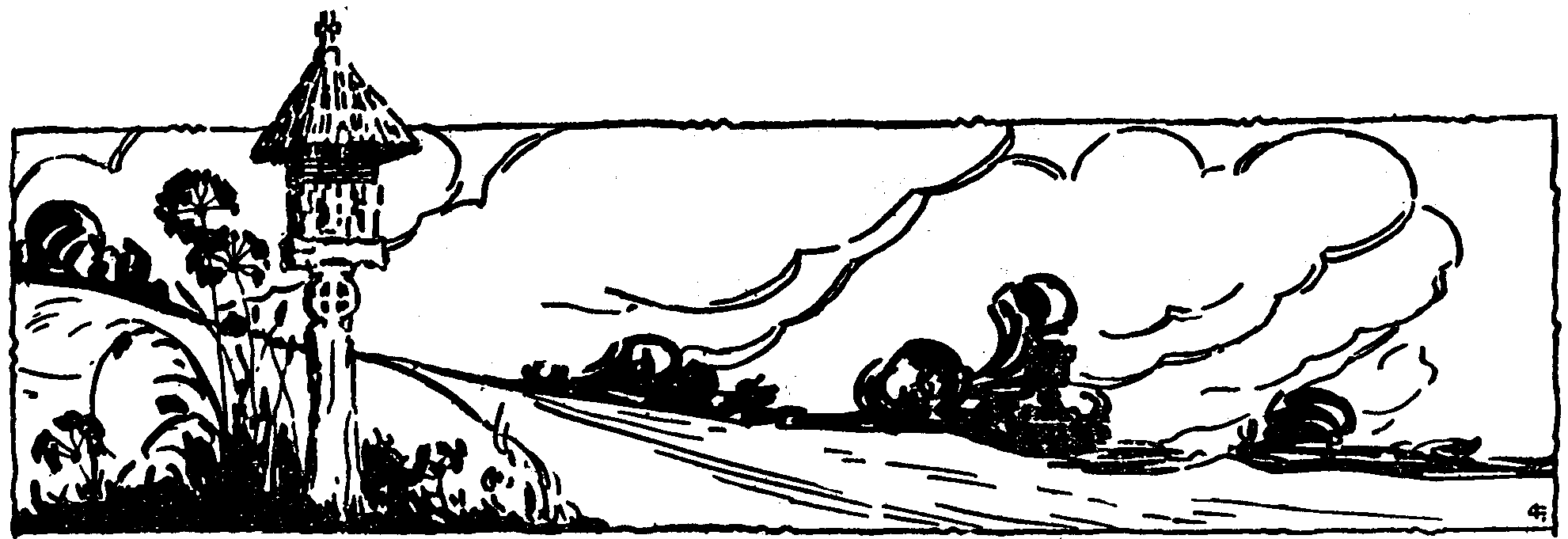
This section covers resources for research on all aspects of Russian cinema and performing arts including dance, theater, and the circus. Although there is some overlap of this category with that of Russian Music and Opera, we try not to include here sources that are predominantly about musical theater, but rather sources that emphasize one of the other performance arts. Ballet is one genre in particular that requires the use of sources from both categories, for information about composers of ballet music will appear in the Music section, but information about choreography and dancers and stage productions will be in this section.
Please note that many Russian performers, directors, choreographers, and films are included in western language sources from video catalogs and specialized encyclopedias to websites and online databases. Described below are major sources for performing arts research either published in the Russian language or in other languages but specifically about one or more of the Russian performance arts. If you are looking for information about drama as a literary form, see the section on Resources for Russian Literature.
Although Russian theatrical and cinematic history is extremely rich, this is not reflected in the publishing output as far as reference books and bibliographies are concerned. There are few really excellent reference sources covering Russian performing arts and even fewer substantial bibliographies. For this reason taking advantage of all possible avenues is important, so do not overlook general arts resources, Western language resources, and Internet resources. This also means having to use bibliographies that appear in periodicals instead of relying on monographic items. In fact, there are a number of Russian/Soviet film periodicals discussed below due to their large bibliographic components.
Guides and Bibliography of Bibliographies
One of the difficulties with this subject is that there are no exceptional guides or substantial bibliographies of bibliographies for Russian cinema and performing arts. There is a general bibliography of film bibliographies that has some information for Russia, but it covers only a minimal portion of the publications available. It is annotated in the General Resources for the Arts since it covers all the countries of Eastern Europe and not just Russia. The three-volume guide listed below covers some of the basic resources in the field, but with a heavy emphasis on stage drama as indicated by its title. The second item listed below limits its coverage to music and theater.
Russkii sovetskii dramaticheskii teatr. Annotirovannyi ukazatel’ bibliograficheskikh i spravochnikh materialov. 1917-1973. Vyp.1-3.
Moskva: Gosud. tsentral. teat. biblioteka, 1977-78. 3 vols.
U of I Library Call Number: International and Area Studies Russian Reference (Slavic) 016.7920947 R913 v.1-3
In the introduction the compilers mention a dearth of fundamental bibliographic and reference works in the area of Russian theater. This guide is one attempt at beginning to fill that need. The work is divided into a number of sections; the first volume contains V.I. Lenin and theater, a general section that describes the various types of reference materials available such as encyclopedias, archival guides for theater collections, etc, a section identifying bibliographies on the theory and history of theater, but the bulk of the volume is listings of bibliographies on specific playwrights. The second volume is dedicated to works on specific theaters. The citations are arranged so that the general works appear first, followed by theaters of Moscow and Leningrad, and then by the other regions of the RSFSR. The non-Russian republics of the former Soviet Union are not represented in this guide. The third volume covers the art of the actor, the director, set design and costumes, and other figures related to the theater such as critics. The rest of volume three contains indexes for names, repertoire, theaters and educational institutions. All entries are annotated. See the entry below that appears in the section on archive guides.

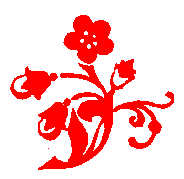
Teatr i muzyka v Rossii XIX-nachala XX v. Obzor bibliograficheskikh i spravochnykh materialov. Uchebnoe posobie.
Petrovskaia, I.F. Leningrad: Leningradskii gosud. inst. teatra, muzyki i kninematografii, 1984. 71 p.
U of I Library Call Number: International and Area Studies Russian Reference (Slavic) 016.7920947 P456t
This is one of the few guides in the field of performing arts and it limits its coverage to just music and theater. It also is limited to the 19th and early 20th centuries. In fact, it is not a true guide, but rather a text that provides an overview of the publishing output in the area. However, it does cover a number of standard works in both fields and gives some tips on where to find various types of information. For example, the book mentions that governors were required to report on provincial theaters in their districts and it tells you where to look to find this information. That the information is presented in the form of bibliographic essays and that there are no indexes makes the use of this source more cumbersome than it should be.

Teatr. Annotirovannyi ukazatel’ spravochnykh i bibliograficheskikh izdanii na russkom i inostrannykh iazykakh (XIX-XX vv.).
Voskanian, E.A. Moskva: Gos. biblioteka SSSR im. V.I. Lenina, Otdel spravochno-bibliograficheskogo obsluzhivaniia, 1983. 66 p.
U of I Library Call Number: History, Philosophy & Newspaper FILM 016.792 V927t
This short bibliography of reference tools in the area of theater has 153 entries for Russian and foreign works. Topics covered include drama, music, opera and operetta, ballet, puppet theater and theater for children. Circus and popular stage performance are not included. All of the citations are arranged by subject categories with Russian items presented first and foreign items listed second. All of the annotations are in Russian. Subject categories include general topics, dramatic theater, puppet theater, etc. with each of these categories being subdivided by type of resource such as encyclopedias, bibliographies, terminological dictionaries… There are author and geographic indexes. See the entry below for a pre-revolutionary bibliography on the history of Russian theater.

Bibliographies
A good place to start researching this field is the Teatral’naia entsiklopediia and the 20-page article entitled “Bibliografiia teatral’naia” which appears in the supplemental volume, pp.27-57. This bibliography divides the citations by type of performing art such as music, drama, puppet theater, etc. Other bibliographies for the performing arts and cinema are described below.
The Soviet cinema, film and photography: a selected annotated bibliography.
Cohen, Louis Harris. Edwards Air Force Base, CA: Photographic Branch, DOETC, Air Force Flight Test Center, 1976. Rev. edition. 492 p.
U of I Library Call Number: Oak Street Facility Q. 016.79143 C66s 1976
This large, annotated bibliography covers a number of interesting topics related to the film industry in the Soviet Union. In fact, each of the 11 chapters presents a different topic. For example, there is a chapter on bibliographies and reference works related to cinema, one on cinema books in Ukrainian, one on autobiography, biography and actors, etc. All of the entries are annotated to give the user a fairly detailed picture of the contents. Many of the chapters also open with a review of the main issues for the topic. Citations for works about stage theater and acting also appear in certain chapters. A glossary of Russian-English cinema terms is included at the end as well as a name-subject index. See the entry below for one of the works of critic Adrian Piotrovskii.


Kinograf: zhurnal prikladnogo kinovedeniia.
Moskva: Nauchno-issledovatel’skii institut kinoiskusstva, 1996-
U of I Library Call Number: International and Area Studies Russian Reference (Slavic) 791.430947 K6244, U of I has n.5,6,10-11
Published since 1996, this serial is devoted to Russian film bibliography. It is divided into several sections which contain various bibliographies such as a bibliography of books published on the subject of cinema during that year, one with published works by cinema figures and bibliographies or filmographies of special topics. A few articles also appear in every issue.

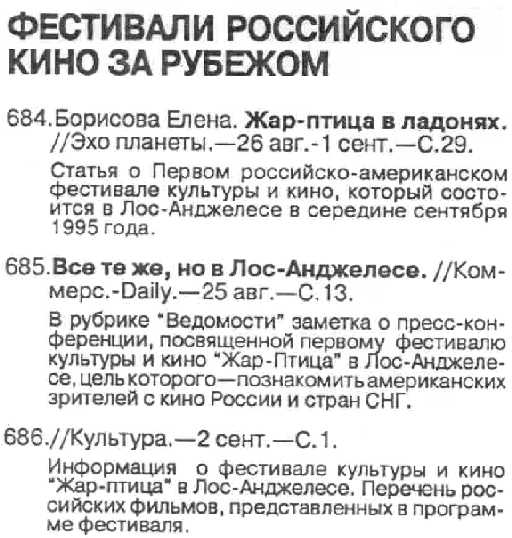
Chital’nyi zal. Kritiko-bibliograficheskii zhurnal o kino.
Moskva: 1995-
U of I Library Call Number: Main Stacks 791.4305 CHI [U of I has n.2, 4-5]
This is another recent serial devoted to film studies that includes bibliography as a major component. The main bibliography section, which covers articles and reviews from newspapers and journals, divides the citations by subject such as directors, documentaries, film festivals, etc. Indexes for authors, names, films appear at the end of the section. Bibliographies of special topics as well as articles and reviews of new books round out the issues. See the entries on the left that appeared in issue no. 2 under the heading Russian Film Festivals Abroad.

Ezhegodnik kino.
Moskva: Iskusstvo, 1955-1961.
U of I Library Call Number: Main Stacks 791.43 Ez1M
Ezhegodnik kino is an annual that covers film in the Soviet Union. It is included here because almost half of each issue comprises an extensive bibliography of books and articles on film that were published in the Soviet Union for that year as well as a detailed filmography of the year. The first half of the annual includes articles on film, but the second half is the Prilozheniia listing important dates and facts, the filmography that provides all basic information about the film including title, director, length, release date, actors, etc., the bibliography, and a name index for the first half of the annual. The entries in the filmography are arranged by title with genre categories, and the entries in the bibliography are grouped first by subject and then by whether they are books or articles. See the citations below for articles about the documentary Povest’ o pingvinakh.


Zrelishchnye iskusstva: Bibliograficheskaia informatsiia.
Moskva: Informkul’tura, 1983- .
U of I Library Call Number: Main Stacks 016.7902 Z8
Novaia sovetskaia i inostrannaia literatura po iskusstvu. Teatr.
Moskva: Informatsionnyi tsentr po problemam kul’tury i iskusstva, 1974-1975.
U of I Library Call Number: History, Philosophy & Newspaper FILM 016.79205 NO
For books and articles about all manner of performing arts from music and ballet to circus and theater, this bibliography is an excellent resource for materials in Russian even though it includes non-Russian items as well. It has been produced since 1974 by the Russian State Library in Moscow and has appeared under various titles. Besides the two listed above it was called also Novosti nauchnoi literatury: teatr (1975-1978) and Bibliograficheskaia informatsiia: teatr (1979-1982). Citations are organized by subject. Use the table of contents to better understand the classification scheme. Each issue has indexes for name/title, show name, name of theater, circus, or dance troupe. See the entries below that appear in the 1986:4 issue under the subject Periodicals on Theater.



Knigi o kino (1917-1960). Annotirovannaia bibliografiia.
Rubinshtein, IU. Zak, M.E. Moskva: Izd-vo Vostochnoi lit-ry, 1962. 180 p.
U of I Library Call Number: History, Philosophy & Newspaper FILM 016.791430947 R825k
This annotated bibliography covers books published in the Soviet Union from 1917-1960 on the topic of film. One of the highlights of this work is that is also provides the contents of collections. The citations are arranged by subjects such as V.I. Lenin on film, theory and history of cinema, cinema in the Republics, film directing, filmography, reference books, etc. See the table of contents for more details. There are indexes for names, themes, scenarios, and film titles. Included are both feature films and animated films. See the entry on the right for a volume on cinematography which appears under the heading of theory and history of cinema arts.
Teatral’naia periodika 1774-1917. Bibliograficheskii ukazatel’.
Vishnevskii, Ven. ed. Moskva-Leningrad: Iskusstvo, 1941.
U of I Library Call Number: International & Area Studies Russian Reference (Slavic) 016.79205 V82t v.1
This bibliography lists pre-revolutionary periodicals on the performing arts, including drama, music, cinema, dance and the circus. The entries are arranged chronologically by date of first publication, but there are title, name, geographical and subject indexes to help locate information within the main arrangement. Entries include full title, place and dates of publication, preceding and succeeding titles, language and enumeration information, etc. Some of the entries are annotated and all list the major libraries in the former Soviet Union that hold the title. See the entry below for Dramaticheskii vestnik. After you use this source to find serial titles of interest, be sure to check the online catalog at the University of Illinois to see if the titles are held in our library.


Sovetskaia literatura: Dramaturgiia, kinodramaturgiia. Rekomendatel’nyi ukazatel’ literatury.
Kununa, A.A. Sakharova, E.M. Moskva: Kniga, 1977. 237 p.
U of I Library Call Number: Main Stacks 016.8917092 So89
This is an annotated bibliography of works about Soviet drama and screenwriting. It is divided into 3 main sections: annotations of major drama works, annotations of major screenplays and a partly annotated bibliography of works about Soviet drama and screenwriting. The bibliography section begins with general works and then lists works about individual dramatists and more specific themes. There are indexes for names, titles and subjects, but unfortunately no bibliographic references for each entry. See the entry below for the screenplay of Osvobozhdenie.
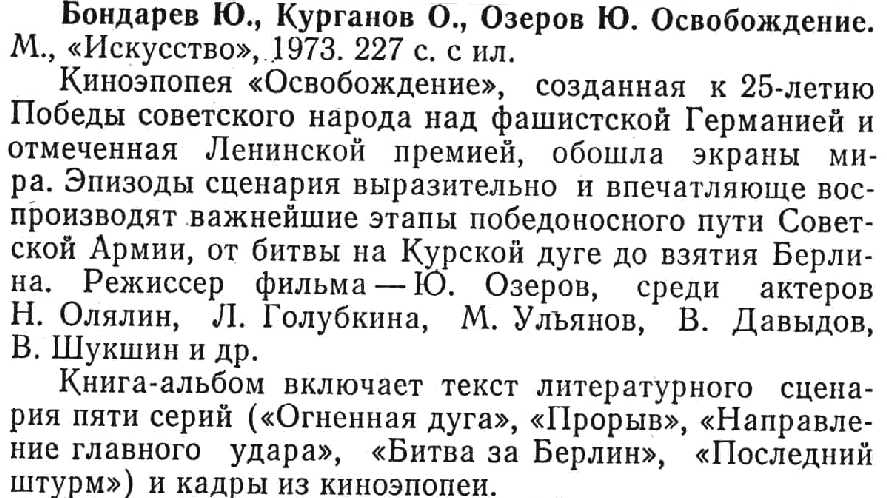

Moskovskii teatr dramy i komedii na Taganke. 1964-1984. Bibliograficheskii ukazatel’.
Lysiak, O.I. Moskva: Gos. tsentr. teat. biblioteka, 1989. 189 p.
U of I Library Call Number: International & Area Studies Russian Reference (Slavic) 016.79209473 L996m
The Taganka Theater is one of the great Russian theaters in Moscow and this piece is a bibliography of works about various aspects of the the theater and its productions. Although this work could be classified as a literary resource due to its heavy concentration of drama materials, it also has sections on set designs, music in Taganka productions and other topics related to the performing arts in general. There are biographical sections for works about famous figures associated with the theater as well as listings for notable productions. There are indexes for shows and names. See the entries below that appear for Veniamin Smekhov.
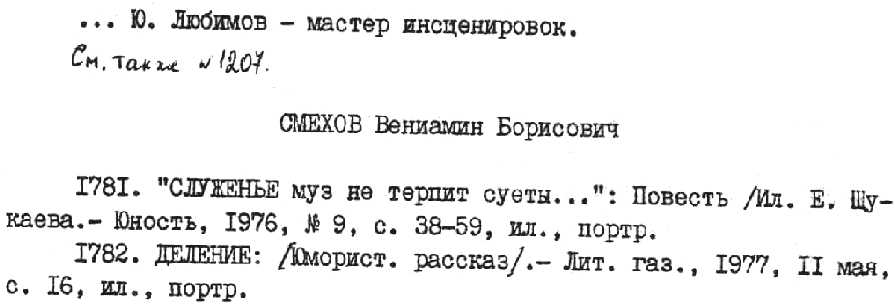

Teatr imeni Vl. Maiakovskogo. Bibliograficheskii ukazatel’. 1922-1978.
Zernitskaia, E.I. Mosvka: Gos. biblioteka SSSR imeni V.I. Lenina, 1982. 414 p.
U of I Library Call Number: Main Stacks 016.7920947 Z54t
The history of the Mayakovsky Theater is presented in this bibliography. It is arranged chronologically by year of production. The initial section under each year presents citations for works about the theater in general. Subsequent sections under each year are for the shows produced in that year with citations for reviews, books, articles, and illustrations about those shows. Each show is initially presented with basic premiere data such as date of premiere, director, stage designer, and composer. There are indexes for names and shows and also a list of periodicals appears at the end. See the image below for some citations about the 1933 production of Fonvizin’s “Nedorosl.'”
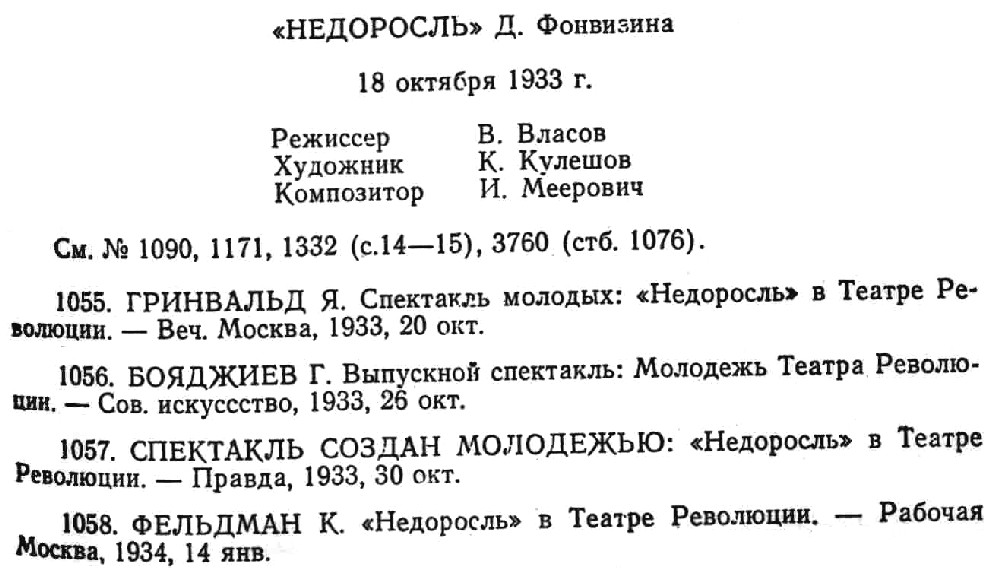

Sovetskii teatr dlia detei 1918-1972. Ukazatel’ literatury.
Zernitskaia, E.I. Moskva: Gos. biblioteka SSSR imeni V.I. Lenina, 1978-1979. 4 vols.
U of I Library Call Number: Main Stacks 016.7920947 So89 v.1-4
This 4-volume set contains thousands of entries for books, journal articles, newspaper articles, and reviews on the subject of theater for children in the USSR. Most entries have brief annotations. The entries are arranged by era, and then by subject within that era. Thus, one of the eras is theater for children during WW II (22 June 1941-9 May 1945) and some of the subcategories are specific theaters and also specific republics of the USSR. The first two volumes present over 3500 citations in this kind of arrangement. The third volume contains “Spravochnye materialy” with an index of all works, books and journals, included in the bibliography, a name index, an index of children’s theaters, a geographic index of theaters, and an index of titles of shows. Volume four contains citations for newspaper articles. See the entry below which appears at the beginning of the section for Azerbaidzhan during the time period of 1956-1972.
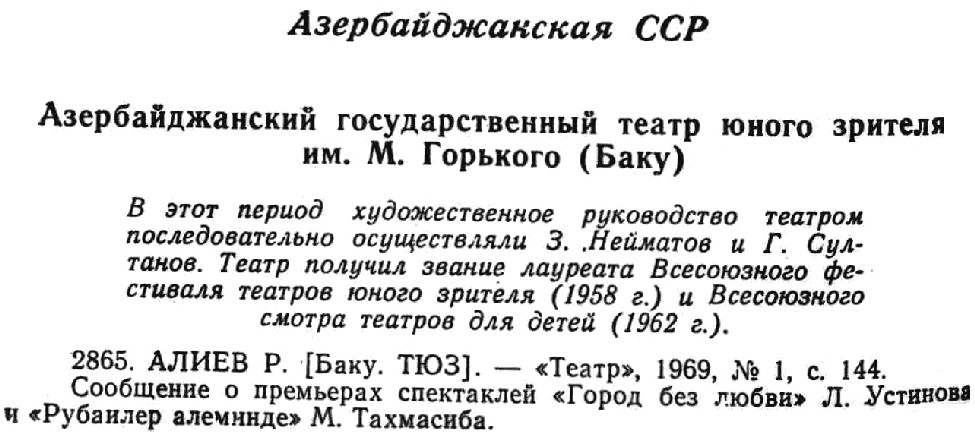

Bibliografiia izdanii Leningradskogo gosudarstvennogo instituta teatra, muzyki i kinematografii, 1971-1991 gg.
Ismagulova, T.D. et al. Sankt-Peterburg: Rossiiskii institut istorii iskusstv, 1992. 26 p.
U of I Library Call Number: History, Philosophy & Newspaper FILM 016.792094721 B471
This bibliography covers monographs produced by the Leningrad State Institute for Theater, Music and Cinematography between 1971 and 1991. Actually, there are only two citations for 1991 in the bibliography, so it really covers only up through 1990. It is a continuation of an earlier bibliography covering the years 1923-1970 which appeared on pages 303-333 of the book Leningradskii gosudarstvennyi institut teatra, muzyki i kinematografii: sbornik statei, 1971. U of I lacks this 1971 publication. The 406 entries are arranged chronologically and unfortunately, there is no index for subjects or even names. See the image below for a few items that appeared in 1985.

Filmographies
For filmographies for the years 1955-1961 see also Ezhegodnik kino described above.
Sovetskie khudozhestvennye fil’my. Annotirovannyi katalog.
Moskva: Iskusstvo, 1961- . 15 vols.
U of I Library Call Number: International & Area Studies Russian Reference (Slavic) 791.43 V96s v.1-4 + v.5 uncatalogued MH film MH1095
This catalog covers Soviet films from 1918-1985 and is greatly enhanced by its detailed indexes. A typical entry for a film includes the names of the major figures involved in the creation of the film, a summary of the plot, bibliographic references, and other descriptive data about the film. There is a name index for all people involved in the film industry, a name index for literary figures whose works have been made into films, an index for films by studio and date, and a chronological index. The entries are arranged chronologically by the date in which the film was made with volume 1 containing silent films from 1918-1935, volume 2 containing talkies from 1930-1957, and volume 4 containing talkies from 1958-1963. Volume 3 contains the indexes for volumes 1 and 2. Volume 4 has its own indexes since it was produced later. Volume 5 covers the years 1964-1965, v.6 = 1966-1967, v.7 = 1968-1969, v.8 = 1970-1971, v.9 = 1972-1973, v.10 = 1974-1975, v.11 = 1976-1977, v.12 = 1978-1979, v.13 = 1980-1981, v.14 = 1982-1983, v.15 = 1984-1985. See the entry below on the film Andzhelo from volume 1.



Fil’my Rossii. 1991-2000.
Moskva: Informatsionno-analiticheskaia “Dubl’-D, 1994-.
U of I Library Call Number: International and Area Studies Russian Reference (Slavic) 791.430947 F4873
This film catalog presents Russian films from the early 1990’s including films made in more than one country as long as one of them was Russia. Entries are arranged alphabetically by film title. A typical entry provides the date, length, names of people involved such as the director, scriptwriter, actors, etc., production company, a brief plot summary, and a filmography and/or biographical sketch of the director. There is an index for directors at the end. See the entry to the left for the film Ochen’ vernaia zhena.
The second title listed above is compiled by the same individuals and covers Russian films from 1995-2000. It provides the same information about each film as the previous title except there are no biographical sketches of the directors. This source has more indexes: for director, actor, composer, scenarist, costume designers, etc.
Ekran.
Moskva: Iskusstvo, 1964-1990.
U of I Library Call Number: Main Stacks 791.4305 EK U of I holds 1964, 1966-1984, 1987, 1989, 1990
Ekran is an annual that covers film in the Soviet Union. It is included here because at the end of every issue is a filmography for the Soviet films released during that year. Entries include all basic information about the film including title, director, length, release date, actors, etc. The films are arranged alphabetically by title within several categories such as cartoons, documentaries, full-length, shorts, and foreign films that were released in the Soviet Union that year. The format of presentation and content of the entries changes over the years with less information being provided in the later years of publication. The other parts of the annual are articles on various topics in the realm of cinema. Some years also include lists of prizes earned by Soviet films and festival information. See the entry below for the cartoon Aktsionery from 1963.


Khudozhestvennye fil’my dorevoliutsionnoi Rossii: fil’mograficheskoe opisanie.
Vishnevskii, Ven. E. Moskva: Goskinoizdat, 1945. 191 p.
U of I Library Call Number: History, Philosophy & Newspaper Film 791.73 V823k
For information on over 2,000 pre-revolutionary (1907-1917) silent and sound films, this short filmography may be helpful. Entries include title, studio, genre, director, length, major actors, and a brief annotation of plot with some historical information included. For example, the annotation may tell you that a particular film was notable for being the first attempt at using a certain camera technique, or that a certain person died during the filming, or some other piece of Russian movie trivia. Entries are divided by type of film (silent, talkie, gramophone) with indexes for names, titles, and literary works adapted into films. See the entry below for the 1909 silent film Drama v Moskve.
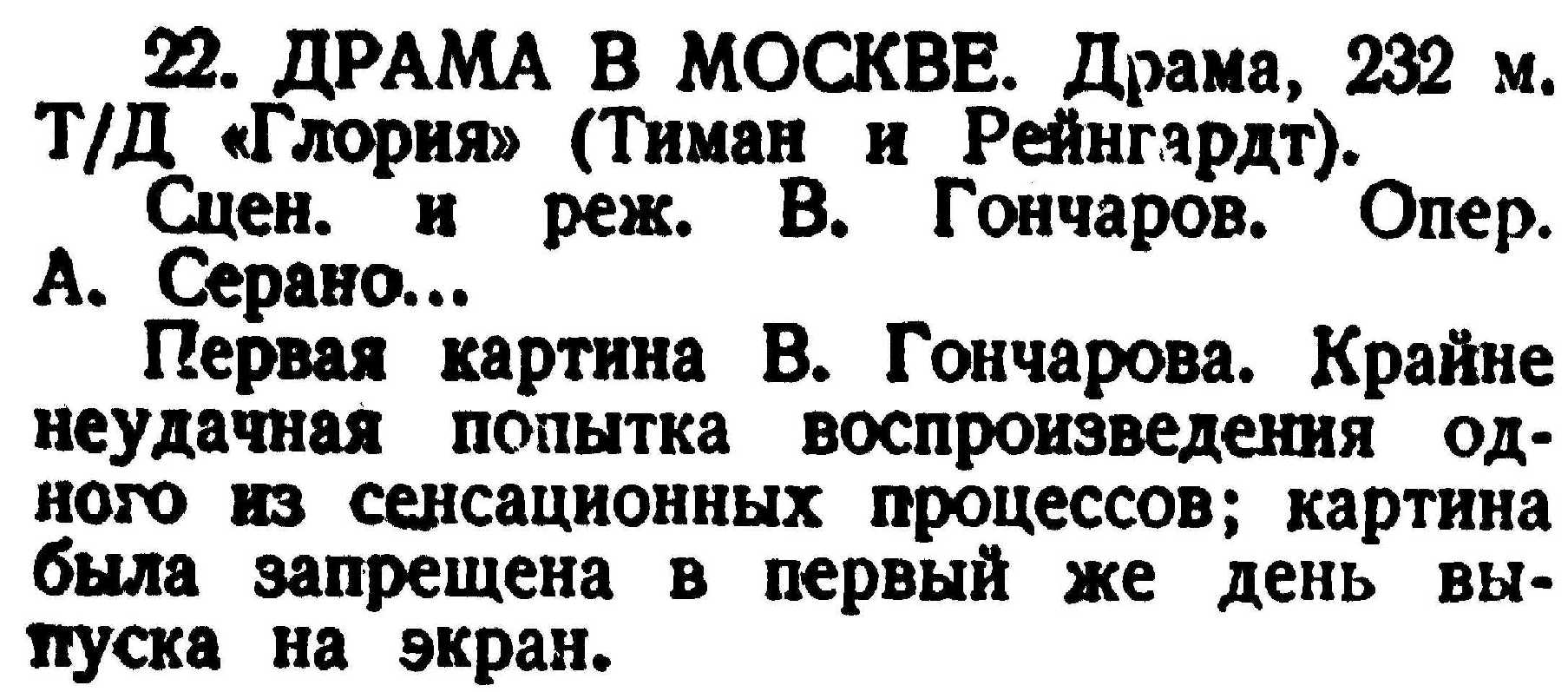

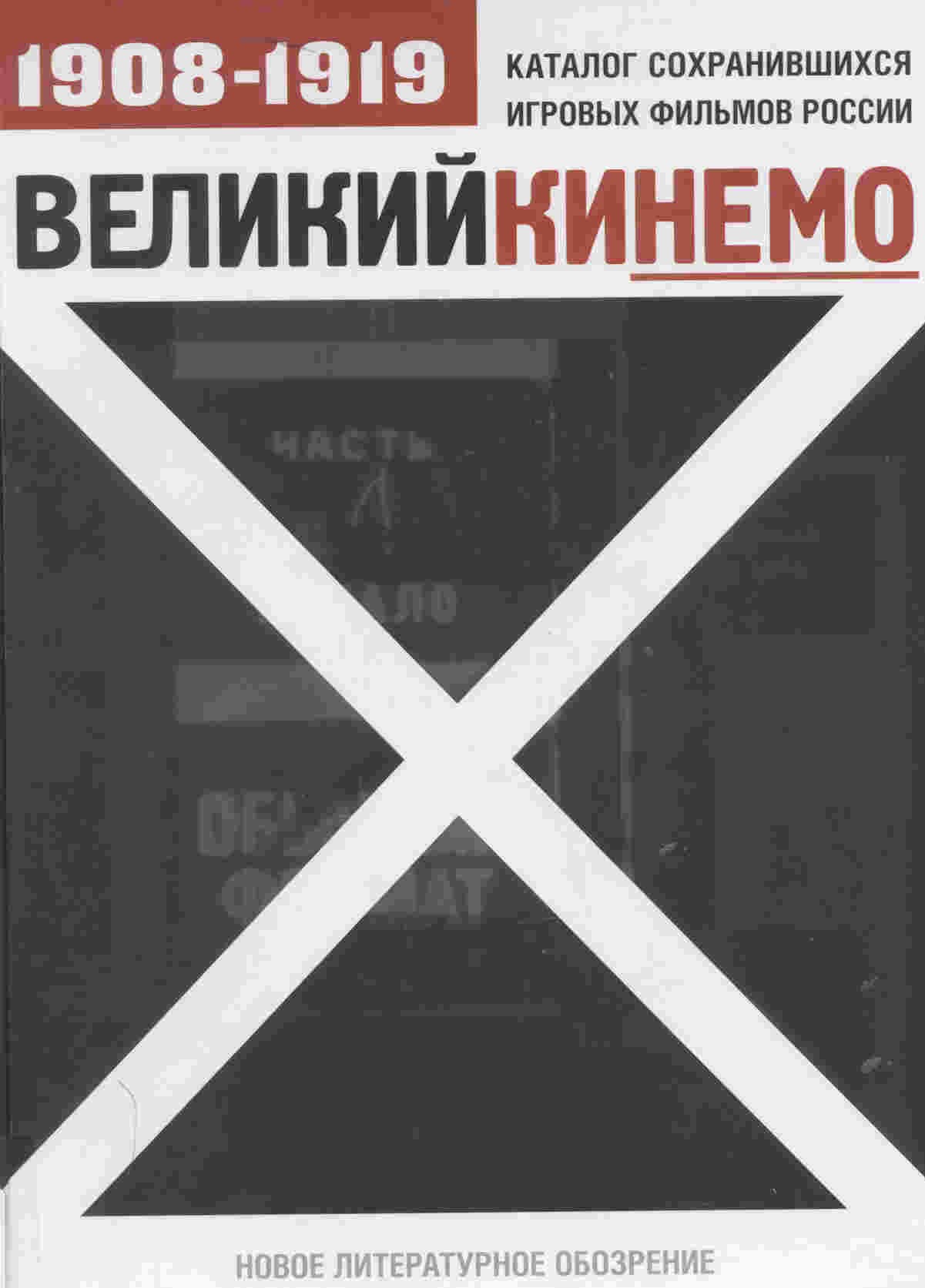
Velikii kinemo. Katalog sokhranivshikhsia igrovykh fil’mov Rossii 1908-1919.
Moskva: Novoe literaturnoe obozrenie, 2002. 564 p.
U of I Library Call Number: International & Area Studies Russian Reference (Slavic) Q.791.430947 V544
This catalog describes about 300 Russian feature films from 1908-1919 which have been preserved in whole or in part in various film archives throughout the world. The films are presented chronologically with basic data given first, for example, genre of film, length, date of release, director, main actors, etc. What follows are reprinted excerpts from both published and archival sources that comment on the films. These sources include periodicals and memoirs of individuals involved in the film industry. There are a number of black and white illustrations that enhance the text. A biographical section of major figures in the Russian film industry during this time period appears at the end of the catalog. Indexes cover cinematographic firms and enterprises, film titles, pseudonyms and cryptonyms, and names. There is also a list of memoirs cited in the texts.

Dokumental’nye fil’my dorevoliutsionnoi Rossii. 1907-1916.
Vishnevskii, Ven. E. Moskva: Muzei kino, 1996. 285 p.
U of I Library Call Number: International and Area Studies Russian Reference (Slavic) 070.180947 V823d
2689 Russian documentaries from 1907-1916 are the subject of this filmography. The compiler was a well-known film historian and film archivist in the Soviet Union. This volume was published posthumously based on the author’s manuscript which is held in the Gosfil’mofond Rossii and is an unique source for Russian documentaries. The documentaries are presented chronologically by year and alphabetically within each year. Entries provide titles, premiere dates and places, genres, and often citations for reviews. Some of them also have annotations pertaining to content. Many of the films covered in this filmography are housed in the Rossiiskii gosudarstvennyi arkhiv kino-fotodokumentov. The compiler’s autobiography is given as part of the introductory materials. There are indexes for names, films whose material was used in the production of other films, films released in various edits and variants of the same plot, and reedited films. See the entry below for an advertising film on the Crimea.


Russian State Documentary Film & Photo Archive (RGAKFD).
URL: http://www.russianarchives.com/rao/catalogues/index.html
Use this site to compile a filmography. It has several databases of films including the catalog of the Russian State Documentary Film & Photo Archive which is located in a Moscow suburb. This catalog holds over 28,000 Russian film titles and it is currently being updated with more titles. Searching can be done by director, cinematographer, studio, data of release, title, and keyword. The records themselves include all of the above information plus a plot summary and other details. The site also has a catalog with English language films. These, however, are not your typical feature films. They are often news related films about various Russian topics. The Russian film catalog must be searched using Cyrillic fonts and the English film catalog uses English fonts. One of the sponsors of the site is the Open Society Institute.
Periodical Indexes for Cinema and Performing Arts
Teatr. Sistematicheskii ukazatel’ soderzhaniia zhurnala. 1937-1976.
Moskva: Gos. Tsentral. teatral. biblioteka, 1984-1985. 6 vols.
U of I Library Call Number: Main Stacks Reference 792.05 TEAT 1937-1976:1-6
Covering all aspects of the performing arts from music and dance to drama and cinema, Teatr is a leading journal in this field in Russia. This six-volume set is an index to the contents of the journal from 1937-1976. The first volume contains the subject classification for the entire set, but at the beginning of each volume is the contents for just that volume. Basically, the citations are grouped by region with the individual genres of performing arts listed for each region. All of volume 6 comprises the name and title indexes for the previous 5 volumes. Since there is no subject index, the user is forced to use the clumsy classification scheme to find things. This is fine if performing arts by region is the focus of the research, but doing a genre search across regions, such as all the articles on ballet, is more cumbersome. See the entries below for some that appear under Georgia and ballet.
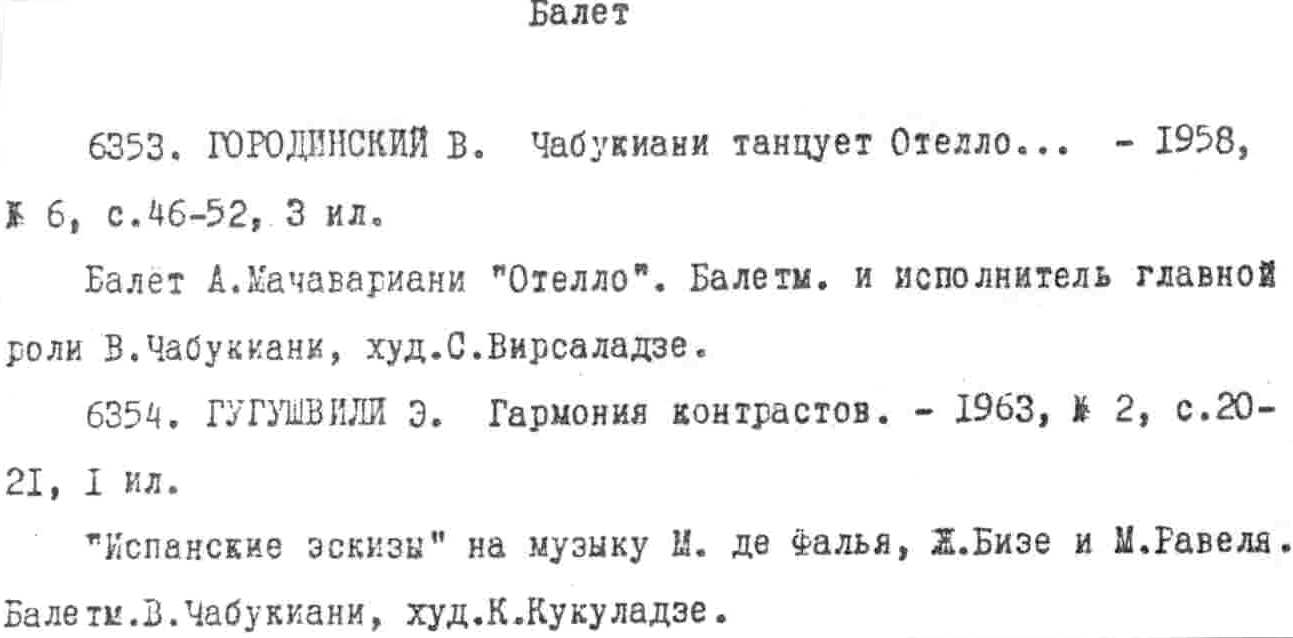
Encyclopedias
Teatral’naia entsiklopediia.
 S.S. Mokul’skii, ed. Moskva: Sovetskaia entsiklopediia, 1961-1967. 6 vols.
S.S. Mokul’skii, ed. Moskva: Sovetskaia entsiklopediia, 1961-1967. 6 vols.
U of I Library Call Number: International and Area Studies Russian Reference (Slavic) 792.03 T222 v.1-5 + supplement. Note: Copy 2 (v. 1-5) in Main Stacks.
Another fine subject encyclopedia from the publishing house Sovetskaia entsiklopediia, this work contains many biographical entries for dancers, musicians, dramatists, actors, etc. Keep in mind that it represents the Soviet perspective. Entries include biographical data, historical significance and often bibliographical references as well. Entries are signed by the scholars who wrote them and are arranged alphabetically by topic or surname with an index volume that contains a name-subject index, a bibliography of the performing arts, and additional entries. The name-subject index groups people by region and speciality. See the entry to the right for the Georgian, Akhospireli.


Russkii balet. Entsiklopediia.
Belova, E.P. et al., eds. Moskva: Soglasie, 1997. 631 p.
U of I Library Call Number: International and Area Studies Russian Reference (Slavic) 792.8094703 R921
Dancers, choreographers, composers, set designers, anyone associated with ballet, including Russian emigres, are the subject of this work. Entries, about 1449 of them, are for historical figures, movements, schools, and ballets with an index of ballets at the back. Entries are signed and provide bibliographical references as well as basic biographical data. Many illustrations enhance the text. See the entry to the right on Alexis Blache.
Tsirk. Malen’kaia entsiklopediia.
Shneer, A.Ia. et al. Moskva: Sovetskaia entsiklopediia, 1973. 375 p.
U of I Library Call Number: International and Area Studies Russian Reference (Slavic) 791.303 Sh6t
Covering the world of the Russian pre-revolutionary and Soviet circuses, this small encyclopedia has entries on circus performers, circus terminology, props, circus acts, and companies, basically, anything related to the circus. Entries range from one paragraph to several in length and most have bibliographical references. There is even an entry for circus journals if further research is desirable. The text is enhanced by numerous illustrations including both drawings and photographs. See the entry below on the cartwheel.
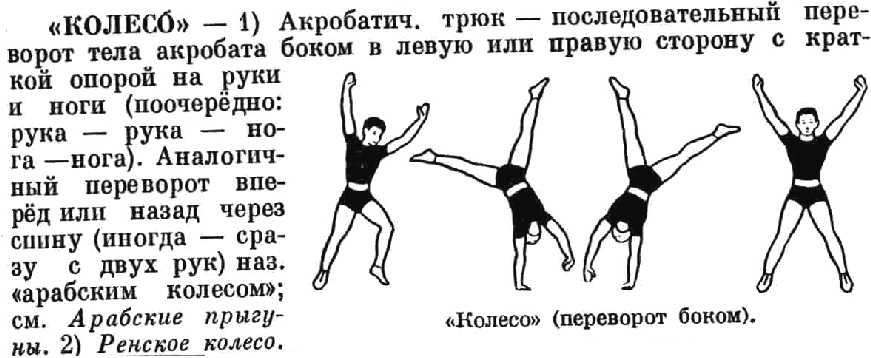

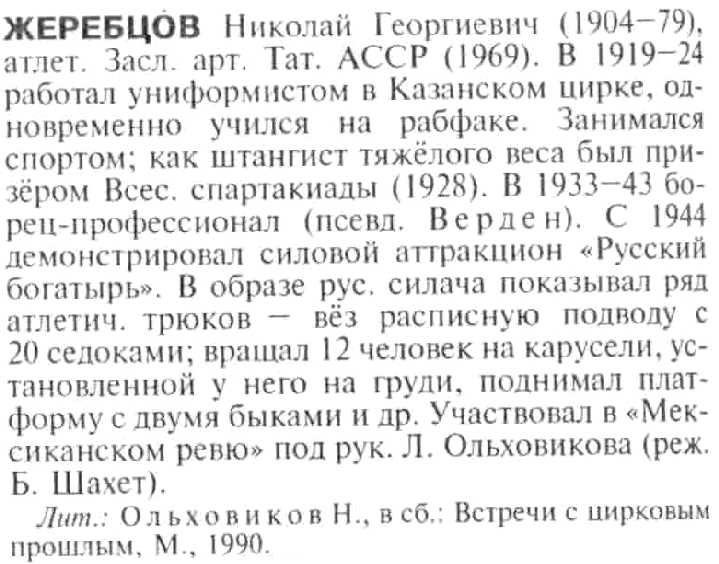
Tsirkovoe iskusstvo Rossii. Entsiklopediia.
Shvydkoi, M.E. ed. Moskva: Bol’shaia Rossiiskaia entsiklopediia, 2000. 479 p.
U of I Library Call Number: International and Area Studies Russian Reference (Slavic) 791.30947 T788
With more than 550 articles, this encyclopedia chronicles all aspects of the Russian circus. Since it is the first Russian encyclopedia of its kind published since the one listed above came out in 1973, the compilers made a special effort to cover topics from recent years. Although most of the articles are biographical sketches of performers, directors, and other circus personnel, the encyclopedia also provides definitions of circus terminology and entries for circus concepts and troupes. Most of the articles include bibliographical references for further reading and are signed by the scholars who wrote them. The book is enhanced by many illustrations and an index of names, pseudonyms and troupes. See the entry to the right on Nikolai Zherebtsov.

Kino. Entsiklopedicheskii slovar’.
Iutkevich, S.I. Moskva: Sovetskaia entsiklopediia, 1986. Izd. 2. + 1970, Izd. 1. 637 p. + 2 vols.
U of I Library Call Number: International and Area Studies Russian Reference (Slavic) 791.4303 K6242
U of I Library Call Number: International and Area Studies Russian Reference (Slavic) 791.4303 K624 v.1-2
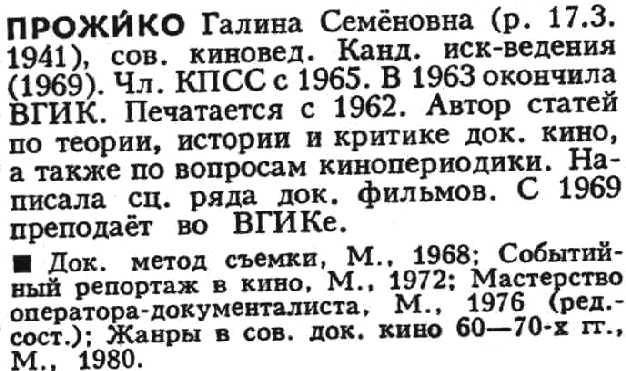
The second edition of this scholarly Russian film encyclopedia updates the first edition. It includes brief articles on all aspects of film history from biographical articles to terminology to longer articles on national cinema. Many western and non-Russian figures are also included. A number of the entries have bibliographical references, but please note that the first edition has more references than the second. At the back of the book there are an appendix of additional entries, a multi-lingual glossary of film terminology, and an index of films. See the entry above on the film scholar Galina Prozhiko.

Balet. Entsiklopediia.
Grigorovich, IUrii Nikolaevich ;Vanslov, Viktor Vladimirovich. Moskva: Sovetskaia entsiklopediia, 1981. 623 p.
U of I Library Call Number: International and Area Studies Russian Reference (Slavic) 792.803 B195
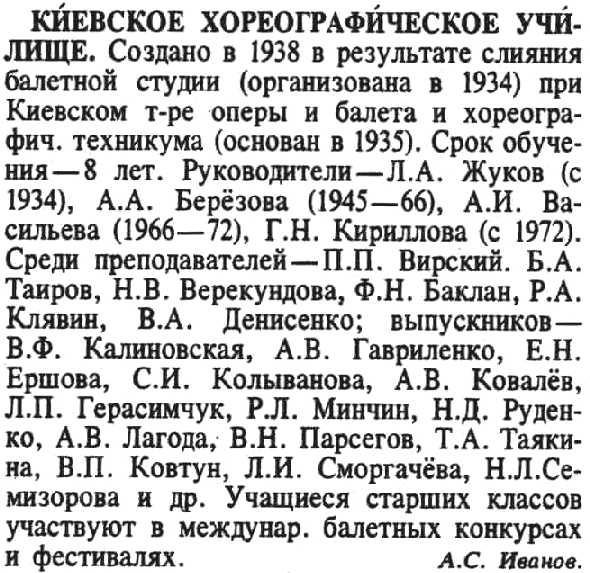
This is an earlier version of Russkii balet, the scholarly ballet encyclopedia mentioned above, but with differences. The later encyclopedia focuses on Russian ballet topics, while this one emphasizes ballet in general, but Russian topics are included. In fact, some of the Russian topics that appear in the 1981 version do not appear in the later, updated Russkii balet so both should be checked for the desired information. All entries are signed by the scholars who prepared them and many provide bibliographic references. Numerous illustrations enhance the text. See the entry above on the Kiev Choreography School.

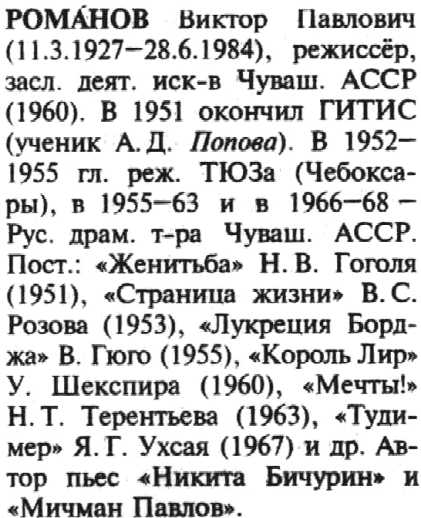
Russkii dramaticheskii teatr. Entsiklopediia.
Andreev, M.I. ed. et al. Moskva: Bol’shaia Rossiiskaia entsiklopediia, 2001. 565 p.
U of I Library Call Number: International and Area Studies Russian Reference (Slavic) 792.0947 R923
This is the first theater encyclopedia for Russia since the 5-volume scholarly Teatral’naia entsiklopediia which appeared in the 1960’s. It includes entries on directors, actors and actresses, artists, theatrical institutions and organizations, as well as related periodical publications from Russia and the former Soviet Union. This encyclopedia extends the coverage of its 5-volume predecessor to the end of the 20th century, but it does not have the full scholarly apparatus that makes the Teatral’naia entsiklopediia so valuable. For example, there are no bibliographical references for the entries and not even an article on theater bibliography. Although the articles are not signed by their authors, the list of contributors is provided at the back. See the entry on the right for the director, Viktor Pavlovich Romanov.
Dictionaries/Misc.
Sovetskii teatr. Dokumenty i materialy. Tom 1-3.
Leningrad: Iskusstvo, 1968-1975. 3 vols.
U of I Library Call Number: International and Area Studies Russian Reference (Slavic) 792.0947 R9212
These three volumes cover Russian Soviet theater from 1917-26 and theater of the peoples of the USSR from 1917-1921. The set is included under the dictionary heading because it is neither a directory and nor an encyclopedia. It has entries for all of the major theaters which begin with overviews of the history of each theater and are followed by the repertoire and premieres listed season by season, and then by archival documents pertinent to major events related to that theater. There are indexes for theaters and theatrical organizations organized by region, for repertoires, for names and for periodicals. There is also a list/bibliography of the archival resources for each theater. Volumes 1 and 2 are entitled Russkii sovetskii teatr 1917-1926 and volume three is Teatr narodov SSSR 1917-1921.

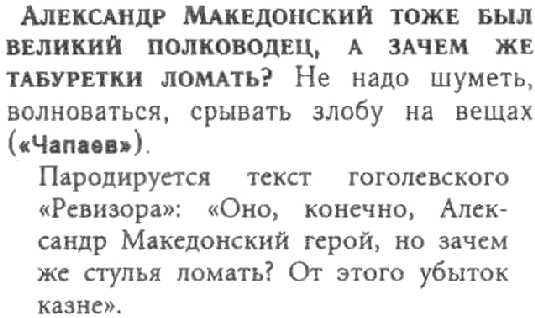
Slovar’ krylatykh slov (russkii kinematograf). Okolo tysiach edinits.
Elistratov, V.S. Moskva: Russkie slovari, 1999. 181 p.
U of I Library Call Number: International and Area Studies Russian Reference (Slavic) 791.4303 El47s
An unusual source, this dictionary compiles over 1000 phrases that originated in Russian motion pictures or cartoons and that have entered into common usage in the Russian language. The compiler explains the meaning of the phrase and cites in which movie or cartoon it originated. Entries are arranged alphabetically by the first word in the phrase. There are indexes for films and key words. The film index can be interesting in that the number of phrases from each movie is easily seen and may be a reflection the movie’s popularity. See the entry to the right for a famous phrase from Chapaev

Bol’shoi teatr. Pervye postanovki baletov na russkoi stsene 1825-1997.
Zarubin, V.I. Moskva: Ellis Lak, 1998. 428 p.
U of I Library Call Number: International and Area Studies Russian Reference (Slavic) 792.8094731 Z192b
Ballet premieres at the Bolshoi Theater in Moscow are the subject of this specialized dictionary/encyclopedia. Articles which are often about a page in length provide basic data about the ballet and its Bolshoi Theater premiere such as the performers, the composer, the choreographer, the date of the premiere and a short summary of the plot. Entries are arranged chronologically by premiere date, but several appendices enhance the text. For example, there is an ballet repertoire for the Bolshoi from 1825-1997 which shows all of the ballets staged during that time period, a list of all the directors of the ballet troupe of the theater, an alphabetical listing of all the ballets included in the main part of the text, a name index and an index of parts and dances. The volume is amply illustrated with both color and black and white images of performers and scenery.

Repertuarnyi spravochnik: ofitsial’nye i spravochnye materialy po dramaticheskim i muzykal’no-dramaticheskim proizvedeniiam dlia rabotnikov uchrezhdenii iskusstv, teatral’no-zrelishchnykh predpriiatii i khudozhestvennoi samodeiatel’nosti.
Bolberg, N.A. Moskva: Gos. Izd-vo “Iskusstvo”, 1950. 531 p.
U of I Library Call Number: History, Philosophy & Newspaper FILM 016.7920947 R299
This volume is an official list of approved works for performance in the USSR as of May 1, 1950. It includes dramas, one-act plays, operas, ballets and operettas. It does not include classic works of Russian drama such as those by Chekhov, Griboedov, Fonvizin, et al. because it was clear to all Soviet theater workers that those works were officially acceptable. Also not included are approved works that are in the languages of the various Soviet nationalities. Any works not included in this list that were not part of the few categories of exceptions were not allowed to be performed on a Soviet stage without prior approval from Glavrepertkom. The list is divided by genre and is arranged by title. The entries provide the title, author or translator, and a brief description such as “tragedy in 4 acts.” After the list is a section called “Spravochnyi material” which provides more detailed information on each work such as a plot summary, a description of the stage Decorations, the number of characters, the cast of characters, etc. These sections are also divided by genre. In addition, there is a list of plays that won the Stalin prize. See the entry below for the opera Dmitrii Donskoi from the “Spravochnyi material”.

Directories
Kino. TV. Video. Partnery ’93.
Moskva: Izd-vo MAI, 1993. 356 p.
U of I Library Call Number: International and Area Studies Russian Reference (Slavic) 791.40947 K624
With contact information for over 1000 organizations, this directory documents many aspects of the movie, television and video industry in Russia. It also has some interesting statistical material in the introduction such as the number of movie theaters in various cities of Russia, the ages and educational levels of moviegoers, etc. The bulk of the text is the directory of organizations which is divided based on type of organization such as governmental agencies, distributors, newspapers and journals related to the industry, and film festivals among others. Indexes for names, organizations, and regions enhance access to the content. Try to double-check information from this source on the Internet since it is several years old. See the entry below for the Museum of Film in Moscow.
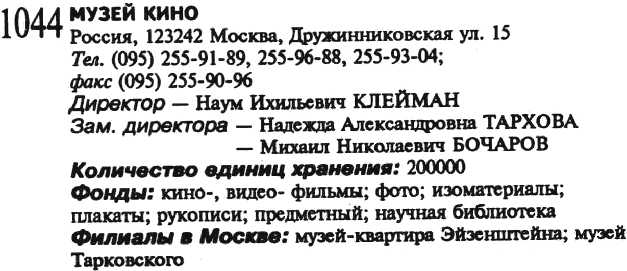

Moskva teatral’naia. Spravochnik-putevoditel’.
Moskva: Moskovskii rabochii, 1971. 284 p.
U of I Library Call Number: International and Area Studies Russian Reference (Slavic) 792.0947 An2m
This is a guide to the theaters of Moscow. More than 30 theaters and theater museums and libraries are covered. The entries include historical data as well as repertoires. The entries are grouped by type of theater. Although much of the data is outdated (more current information can be found on the Internet), the seating plans for each theater are very well done with all rows and sections numbered and labeled clearly. See the plan reproduced below for the Stanislavsky Dramatic Theater.
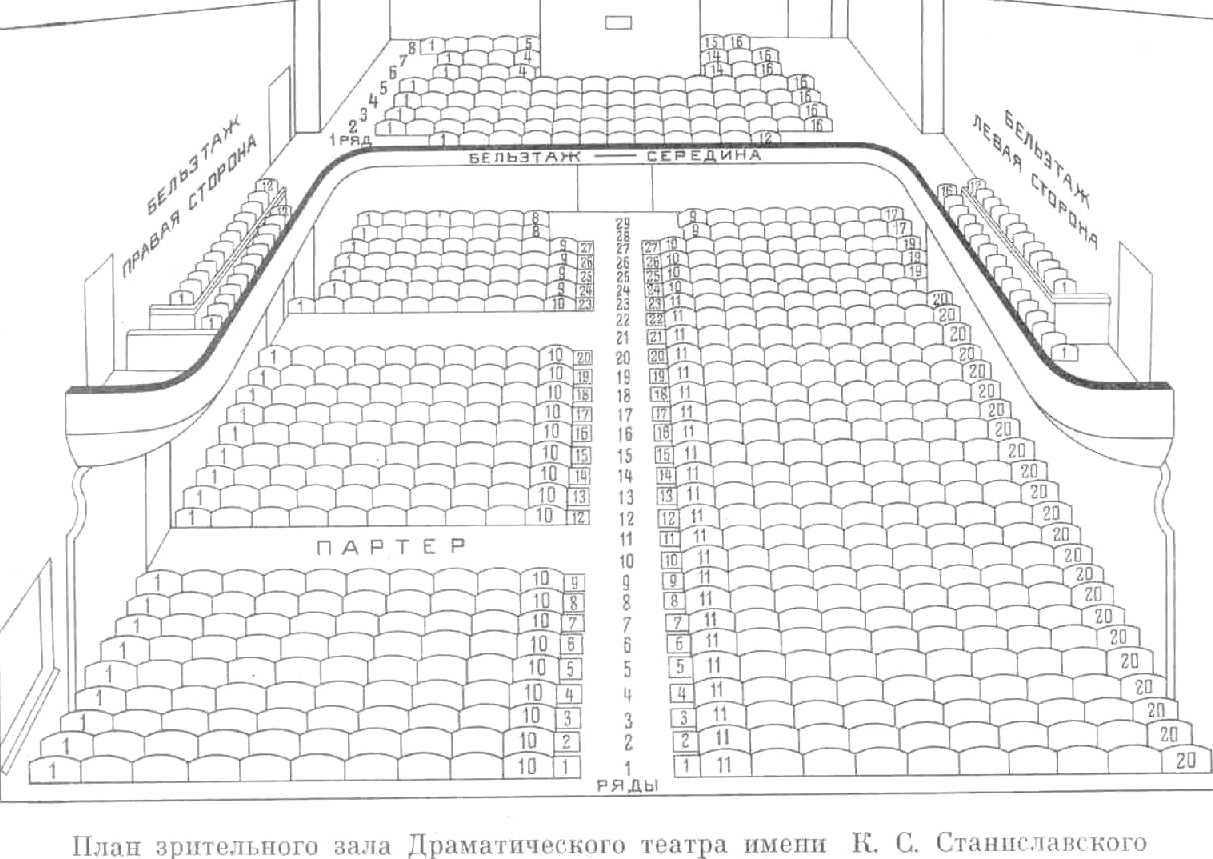
Looking for Russian theater seating plans? City directories often include them. For Moscow and St. Petersburg in the early part of the 20th century try Vsia Moskva and Ves’ Peterburg/Ves’ Leningrad. The University of Illinois holds almost complete runs of these titles on microfilm from 1896-1936 for Vsia Moskva [U of I Library Call Number film 914.731 V969] and from 1894-1934 for Ves’ Peterburg/Leningrad [U of I Library Call Number film 914.745 V63]. The Internet can also provide seating plans.
Biographical Resources for Russian Cinema and Performing Arts
In addition to using this section, see also the biographical section on Russian Music, for some of those sources may be applicable to this category. The page entitled General Resources for the Arts includes items that cover both Russian and Eastern Europe. There are some biographical sources there that would be interesting for Russian cinema research. Keep in mind that encyclopedias are good sources for biographical information. For this category see in particular Teatral’naia entsiklopediia and Russkii balet.
This section includes mostly biographical dictionaries or sets that are not covered in the Russian biographical archive. Those few that are both in the RBA and included here are of particular signifance and are noted as such. Resources for Russian biography are extremely rich and the Biographical Archive doesn’t even scratch the surface, so be sure to use this set as a starting point only.
Stsenaristy sovetskogo khudozhestvennogo kino 1917-1967. Spravochnik.
Moskva: Iskusstvo, 1972. 439 p.
U of I Library Call Number: International and Area Studies Russian Reference (Slavic) 791.432 St89
With several hundred entries, this biographical dictionary covers individuals who engaged in scriptwriting for the Soviet film industry regardless of whether they made their main career in that capacity or in some other. Typical entries include birth and death dates, a career statement, brief educational details, awards, a list of films that the individual worked on and bibliographical references for works by and about the scriptwriter. Entries are arranged alphabetically by surname. See the entry below for Viktor Viktorovich Konetskii.
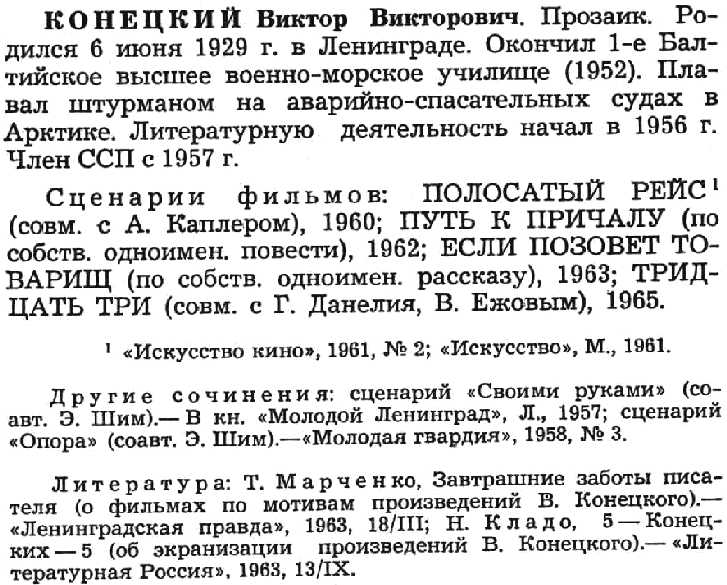

Who’s who in the Soviet cinema. Seventy different portraits.
Dolmatovskaya, Galina; Shilova, Irina. Moskva: Progress, 1979. 684 p.
U of I Library Call Number: Russian Reference 791.430922 D62:E cop.2. Note: Copy 3 in Main Stacks.
If you consider this work more of an introduction into Soviet cinema than a serious reference source, it may help with your question. This English-language source is divided into two sections: directors and actors. The articles read more like stories than like fact-filled biographies, but there is some basic information included such as birth date, education, and a brief filmography. Follow the link for the entry on the actress Ludmila Savelyeva.

Estrada Rossii. Dvadtsatyi vek. Leksikon.
Moskva: ROSSPEN, 2000. 782 p.
U of I Library Call Number: International and Area Studies Russian Reference (Slavic) 790.0922 Es882. Note: Copy 2 at Oak Street Facility.
With more than 800 articles, this source contains many biographical sketches of Russian performers, from rock stars and bards to song writers and artists of the circus, including some emigres. Biographical entries provide personal data and career achievements as well as bibliographical references. There are also non-biographical entries for genres, rock groups, dance troupes, etc. Some photos of artists and groups are included. The length of the entries ranges from several pages to one paragraph, but all are signed. All entries are arranged alphabetically. Particularly valuable is the extensive name index which provides access to people mentioned in the text that do not have their own entry. See the entry below for the juggler, Mikhail Ivanovich Meshcheriakov.
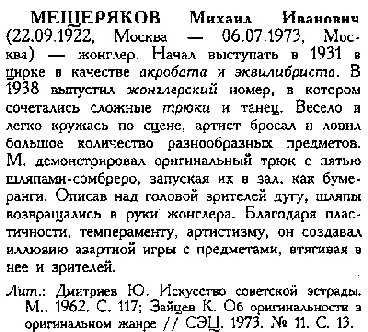

Stsenografiia 70-kh. Rekomendatel’nyi annotirovannyi ukazatel’ literatury.
Moskva: Gosud. tsentral. teatral. biblioteka, 1983. 115 p. (Seriia “Chto chitat’ o teatre”).
U of I Library Call Number: Main Stacks 016.7920947 Z37s
This small biographical dictionary covers a handful of famous Soviet theatrical set designers active in the 1970’s. The introduction is a brief overview of the topic with the entries following arranged alphabetically by surname. Entries typically are several pages long providing biographical data and career highlights with bibliographical references and lists of the major works of each figure. The appendices include a bibliography for further reading and a bibliography of reference works related to the topic as well as indexes for names, authors and titles.

Materialy k istorii teatral’noi kul’tury Rossii XVIII-XX vv.: Annotirovannyi katalog. Vyp.3 Personaliia.
Sankt-Peterburg: RNB, 1992.
U of I Library Call Number: International and Area Studies Russian Reference (Slavic) 792.0947 G699m v.3:1, v.3:2
This set provides citations for archival documents held by the Russian National Library in Saint Petersburg such as letters, telegrams and photos for figures prominent in Russian theatrical culture. The entries are arranged alphabetically by surname of the figure and contain a brief description of the document as well as fond and item numbers. Each figure is identified by full name, dates and a brief statement of their occupation. There is a list of all included fonds and a name index. See the entry below for the documents of the tenor Mitrofan Chuprynnikov.


Ves’ teatr za 75 let. Entsiklopedicheskii slovar’.
Dubrovskii, V.Ia. ed. Moskva: Inkombuk, 1999. 695 p.
U of I Library Call Number: International and Area Studies Russian Reference (Slavic) Q.792.094731 V63
This recent encyclopedia is actually a biographical dictionary of people associated with the Maiakovskii Theater in Moscow during the first 75 years of its history. The individuals included range from actors and directors to composers and dramatists. The first section has long biographical articles on 4 major figures in Russian theatrical life, Meierkhol’d, Popov, Okhlopkov, and Goncharov. The rest of the encyclopedia comprises regular biographical entries that span one paragraph to several pages in length for hundreds of other individuals. There are some helpful additions such as a repertoire of the theater from 1922-1997, a list of all the employees of the theater in 1997, and a name index. The texts are enhanced by many photographs, but no bibliographical references are provided.
Subject Websites
The performing arts and cinema are subjects that are well-represented on the Internet. In fact, there is so much information to sift through that it is imperative to locate a couple of good portal or gateway sites that can introduce you to the wealth of material available on the performing arts topic of your interest.
How do you find Russian performing arts and film portals? You can try going to any big Russian gateway or search engine such as Yandex or Mail.ru and search the terms “kino,” “portal” or “teatr,” “portal”. You can also try this (using English search terms such as Russian film portal) in a western search engine such as Google. Some of the biggest sites will appear, for example www.film.ru, Kino Teatr, Teatr. Stranitsy moskovskoi teatral’noi zhizni., Kinoafisha Moskvy, and Teatr.ru. Most of these portals include links to other sites as well as news of the industry. Many of those that are geared to cinema also have film databases that cover Russian as well as Western films. A number of portals that deal with culture in general also will come up.
Sometimes the expression “baza dannykh” (database) on a Russian search engine can result in finding interesting reference tools on the Internet. For example, searching “baza dannykh” and “teatr” can lead you to the site of the Center for Information Technologies for Theaters which contains a database of theaters all over the former Soviet Union. Some of the entries are more complete than others, but useful information still can be gleaned from it.
Another option is to look for a person or organization that has gathered links on Russian cinema or performing arts and produced some kind of guide to these sites. Such guides may be helpful in beginning your search for internet resources on Russian performing arts. Take a look, for example, at the webpage prepared by the library specialists at the University College London or at the guide created by the staff of the Library of Congress. There are many such guides to the Internet that have been produced by Slavic departments or Slavic centers around the world and most of them have sections on culture and/or film and theater. Please keep in mind that websites are often most useful for current, not historical or in-depth, information.